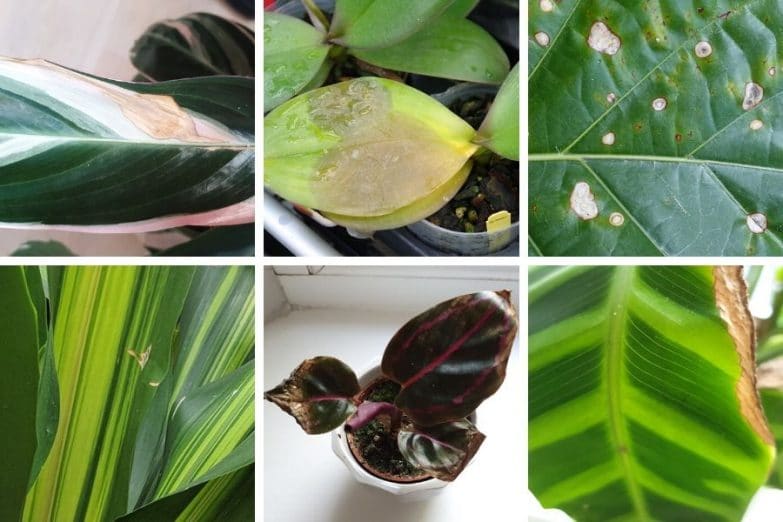Your cart is currently empty!

Why Are My Indoor and Outdoor Plant Leaves Turning Yellow and Brown?

Yellow and brown leaves can be a sign of many different things, but the most common is watering problems.
If you see yellowing, try to determine the source of the problem and fix it before your plant dies or gets worse.
Overwatering is often the culprit. Overwatering can cause oxygen to be pushed out of the soil, causing plants to become suffocated and die.
Lack of Light
Many indoor and outdoor plants need adequate light to thrive, but not too much or too direct. Check your plant’s specific requirements and make sure all of its leaves are getting plenty of sunshine.
A lack of light can lead to yellowing and fading leaves. This is especially true for the lower leaves in your plant, where it may be getting too little light to produce chlorophyll.
This is the most common reason for leaves to turn yellow, and can be easily fixed by ensuring your plants receive enough water. You can stick your finger into the soil to see if it is dry, and water more frequently as needed.
A less common cause of leaves turning yellow is the buildup of excess mineral salts in the soil. If you suspect this is the issue, it can be prevented by flushing the soil with distilled or filtered water to remove any excess minerals.
Over Watering
Over watering is one of the most common mistakes people make when it comes to growing plants. It can cause a wide range of problems that eventually kill your plant.
Typically, yellowing leaves are the first sign that you’re overwatering your plant. This is because the leaves are not able to absorb the nutrients they need in order to grow.
If you’re unsure whether you are overwatering your plant, try using an inexpensive moisture meter to check how much water is in the soil. Many stores sell these tools for a reasonable price.
If you are still unsure, take your plant out of its container and check its roots. If your roots are dark and mushy, they could be a sign of root rot. This rotten root tissue can kill your plant if not caught in time.
Pests
While many plants produce chlorosis (yellowing) as a normal part of aging, it can also be indicative of pest or disease issues. When plant leaves turn yellow and brown, it is an indication of a problem that needs to be addressed.
Luckily, most gardeners can identify and treat the pests that cause outdoor plant leaves to turn yellow and brown with minimal trouble. But before you can get started, you’ll need to determine which insect is causing the issue.
Some of the most common garden pests are aphids, mites and fungus gnats. These insects pierce and suck the sap from a plant’s leaves, leading to discoloration and sometimes plant death.
To rid a plant of aphids or other pests, Leary recommends sanitizing the soil with soap and water and rinsing with neem oil. Alternatively, you can use commercial chemical pesticides, but be sure to test the pesticide for safeness before applying it to your garden.
Diseases
Yellowing plant leaves can be a sign of many different conditions and ailments. Whether it is environmental, cultural, pest or disease issues, the yellowing of a plant’s leaves can signal problems that should be addressed before they become serious or irreparable.
The first thing to do is determine the cause of the problem. The most common reason for yellowing plant leaves is a nutrient deficiency. This can be due to a lack of certain micronutrients, such as iron, manganese, zinc, copper, boron, or silicon, in the soil.
Other causes are a soil pH imbalance, damage to the roots, or other factors that prevent the plant from getting the nutrients it needs. If a soil test indicates a nutrient deficiency, consider adding a fertilizer designed for that specific plant.
Overwatering can also cause yellowing plant leaves. When the soil is overly wet, the roots suffocate and cannot get the water and oxygen they need. This condition, known as root rot, can be dangerous to a plant, and yellowing plant leaves are often the first symptoms.
by
Tags: